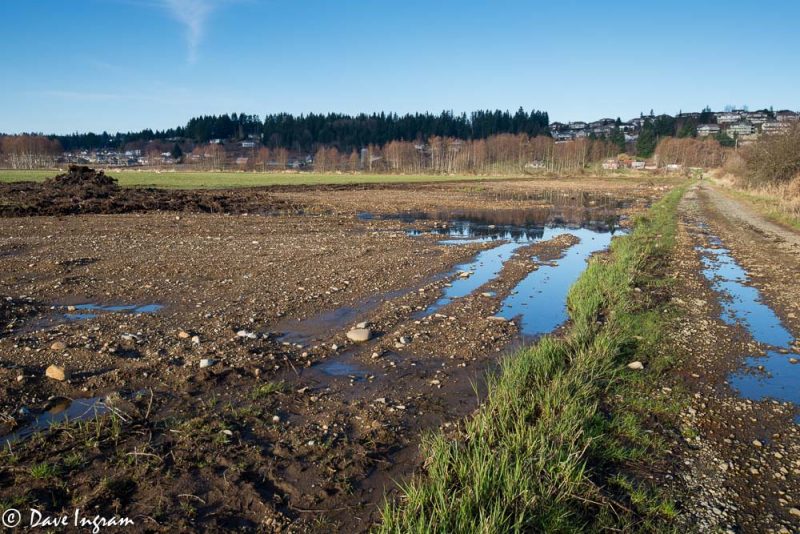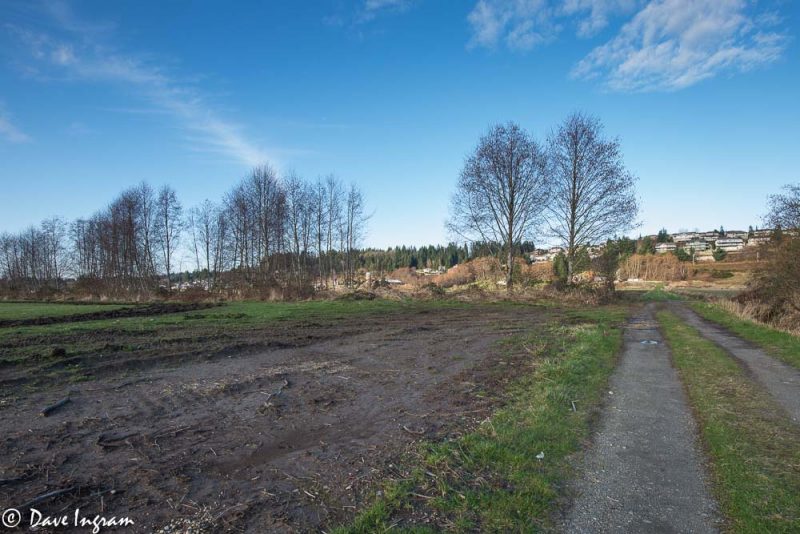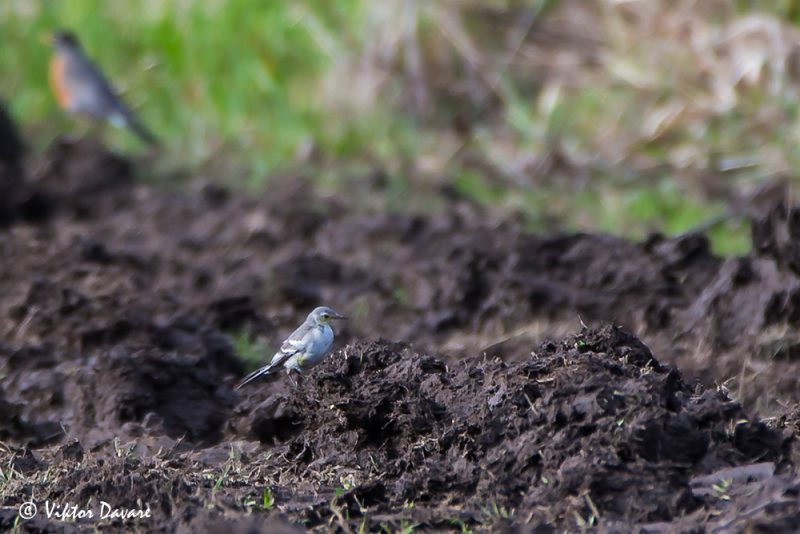Update: March 24, 2013
Last confirmed sighting of the Citrine Wagtail on eBird was Thursday, March 21. However, since that time, access to the farm lane has been restricted due to active farming and the lane is gated.
Original Post
I have to admit that during the dark days of January, 2013 I had written the citrine wagtail (Motacilla citreola) off. Originally found by Dave Routledge way back in November of 2012, it was hard to imagine this out of the way migrant surviving through a brutal cold snap in January and there were a couple of weeks when the bird was not seen at all, despite birders spending days waiting and looking for it. No one was reporting it on the BCVIBIRDS Yahoo group either.
That was my state of mind when I got an email from John Reiter, a local naturalist, in early February. He reported seeing it on several occasions and even photographed it, but not being a birder or member of the Yahoo group, hadn’t posted it. Over the last couple of weeks of February the wagtail was seen again by several birders and photographers—it doesn’t seem to stay in one location for too long and is not as predictable as it was back in November and December. Some birders went days without seeing any sign of it, only to get a short 10 minute view before it moved on so a little luck and patience is required.
On Wednesday, March 6, I thought I’d check the field to see it again. George Bowron had reported it around 3:30 pm on Monday, March 4 at a slightly different location further down the farm field road beyond where the slash piles used to be (they were burned recently and are no longer there).

By chance, local photographer Viktor Davare saw me parking my car and pulled over to join me on the search. We walked the length of the road and saw nothing where the slash piles had been cleared out. I was a little unclear about where exactly George had seen the wagtail on Monday, but as we got to the far hedgerow it became obvious that this was the location where the bird had been seen last. The road crosses a ditch and on the other side of the hedgerow carries on through the remains of a corn field to the farm caretaker’s house.

We were about to head back to the cars when Viktor heard something unusual. There were a few American robins around and I initially thought it might have been one of them trying out a new spring call. Then the wagtail popped out from behind some freshly turned dirt and began moving through some tire ruts running parallel to the edge of the field and the hedgerow!

Note the yellow on the flank and cheek.
Photograph courtesy of Viktor Davare
We had some great looks and Viktor managed to get a few photographs before a northern shrike bombed through the birds scattering the robins and wagtail into the safety of the red alders in the hedgerow. We lost the wagtail, but the shrike (thankfully, unsuccessful) was cooperative.

It’s hard to believe that this very rare bird (first Canadian and second North American record) is still around after 113+ days! Hopefully we’ll get to enjoy its presence a bit longer. It would be wonderful if it successfully migrates back to its natural breeding grounds in Asia when the time comes.
Citrine wagtail image courtesy of Comox Valley wildlife photographer Viktor Davare.
Read More:
- The Naturalest Naturalist: Citrine Wagtail Twitch!
- ABA Blog: Citrine Wagtail
- BC Rare Bird Alert: Citrine Wagtail in Comox
- Volant BC: Citrine Wagtail Alternate Location
- Citrine Wagtail in Comox-Saturday, December 1, 2012
- Citrine Wagtail Mega Twitch Dip Tick
Getting There:
Out of town birders may want to consider the Best Western at the junction of Cliffe Avenue and 17th Street bridge (approximately 5 minutes from the viewing sites) or the Holiday Inn Express on Cliffe Avenue before the 17th Street bridge (approximately 10 minutes from the viewing sites). There are a number of budget hotels near the intersection of Cliffe and 17th Street as well.
From the Inland Island Highway take exit 117 onto the Comox Valley Parkway. Follow the parkway into Courtenay until you get to a T intersection (Cliffe Avenue). Turn left onto Cliffe Avenue and follow it until you reach 17th Street and the 17th Street Bridge. Turn right onto the bridge and stay in the right hand lane. Turn right onto the Dyke/Comox Road on the far side of the bridge (T intersection). On your right will be a large open paved area that is fenced. This is the old site of Field’s Sawmill. At the far end of the fenced area on the right hand side is a pump station. Park here (but don’t block access to the station)—there’s plenty of room to pull over safely.
The farm road is on the opposite side of the road. Walk along the road to the first line of trees and over the wire gate. Continue along the farm lane to the next line of trees where the road crosses a ditch. Check the bare earth and standing water as you make your way along the road. The wagtail was seen several times in the fresh ruts close to the second hedgerow and the corn field on the far side of the hedgerow.
The alternate location is a couple of minutes further along Comox Road. From the pump station, continue on Comox Road until you see a wildlife/bird viewing platform on the right hand side of the road (coming from Courtenay). Pull in and park here. Cross Comox Road on foot (look both ways!) and continue along the road until you see the gravel lane way beside a large pink stucco house with a blue shingle roof. It’s a short walk down to the gate shown in this post. Again – please be very respectful of private property in this area and under no circumstances enter the field (even if you see people walking their dogs on it) or any of the private driveways.
Check the bare earth and wet standing water in this area for the wagtail. There's also a wooden plank over a narrow ditch which gives you a view over the potato field on the other side of the hedgerow.
Check the muddy ruts on the edge of the field here and the corn field on the far side of the ditch and hedgerow. Can be tricky to see the bird as it hops in and out of the ruts.